What’s In Your Shed: Contractor ditches new kit for retro fleet
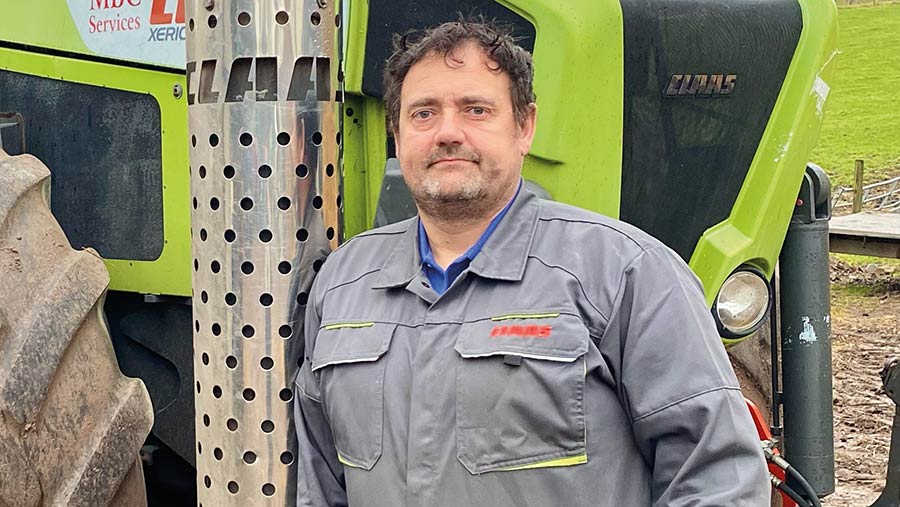 Mark Bowran © MAG/Oliver Mark
Mark Bowran © MAG/Oliver Mark Mark Bowran, 2003 winner of Farmers Weekly’s Tractor Driver of the Year competition, opens the doors of his MBC Services contracting business.
Machinery editor, Oliver Mark asks the questions and and we see a video clip of Mark Bowran’s best invention in action.
See also: Video: Grower builds cover crop broadcaster for £3,000
Business facts: MBC Services
- Farm size 70ha rented, 4ha owned
- Cropping Grass for horse hay, barley and fodder beet
- Contracting Cultivating, spraying, combining, baling, muck and slurry spreading, grass seeding
- Staff Mark Bowran and three others full-time
How did you get started?
When I finished at agricultural college I went to work for local contractor Drew Watson, where I stayed for 10 years.
After a short stint on a beef farm, which I tried as a means of working normal hours, I decided to start my own business from scratch in 2003.
I put every penny I had into leasing a tractor and convinced Lloyds to let me pay for a second-hand drill at the end of the season.
From there, things just snowballed, to the point where I had a team of 10, three Claas choppers, two combines and six or seven tractors.
But they were all on huge finance packages and I felt like I was working flat out, seven days a week just to stand still.
By 2009 I’d had enough. I’d made £5,000 profit in a year and something had to change before I went under, so I sold everything, paid off all the finance and started again.
From that moment I decided to have a “zero-finance” approach. The money from the sale went towards buying a couple of tractors and some slurry spreading gear, and I retained two members of staff.
It has been difficult to grow the business with this model but it’s far less stressful. Everything is paid for and I don’t have to chase every job because the kit isn’t costing me money when it’s sat in the yard.
The cost of new machinery pickles my head – I want a house for six figures, not a tractor.
Though my kit is old, it is well looked after and as reliable as can be expected. I’ve got nothing under warranty, so a big breakdown bill comes with the territory every now and again, which I can stomach.
The only challenge is finding staff without being able to offer them the fanciest tractors to drive – even if I pay them a bit more. But in my eyes, money in the bank is better than a yard full of shiny machinery.
I’ve since bought the site where I’m based, and last year I took on 75ha down the road to grow cereals and grass for horse hay. I also run a straw haulage business, which keeps me busy through the winter.
How brand loyal are you?
I don’t consider myself particularly brand loyal, but I’ve always liked John Deere tractors and the local Claas dealer has been great – so those are the two I usually go for.
I always wanted a Deere, so it was the first thing I bought when I set up on my own.
I also dabbled with JCB Fastracs – I really liked the 2140, which I’ve had on everything from mowing and buckraking to drilling, but the newer ones were too dear.
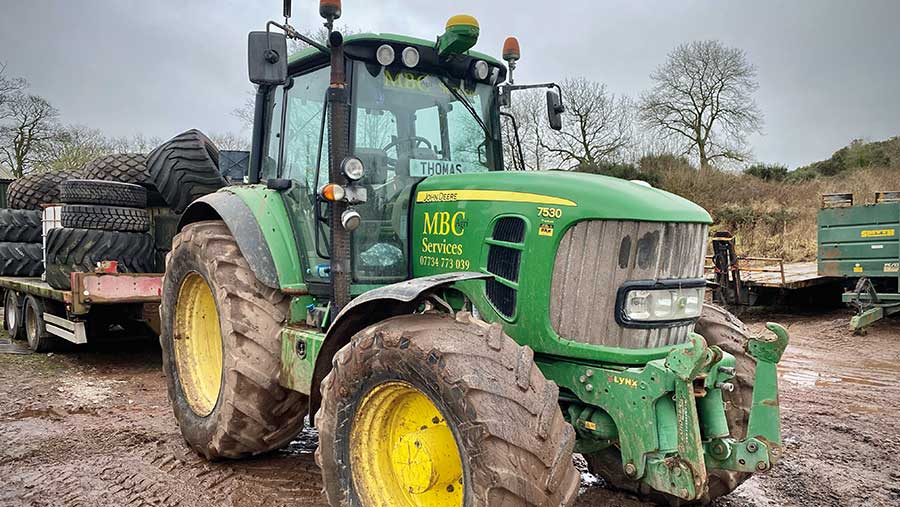
John Deere 7530 © MAG/Oliver Mark
The two John Deere 7530s I currently run have been seriously good value. I bought one of them, an 11-plate on 7,000 hours, for £34,000 from Lincoln, and I reckon it’s still worth that now (on 12,000 hours).
That’s zero depreciation, compared with a new Fendt or Fastrac that’s losing £20/hour.
Favourite dealer?
Gordons, the Claas dealership at Dumfries, has helped me out many times.
We’ve also still got a few small, independent dealers in the area, one of which is Southern Tractors just down the road in Ruthwell. They sell Landini tractors, and I’d almost buy one from them because their service is so good.
I often run bits in for fixing when I’m busy and they’ll always find time for it.
Favourite piece of kit?
The Lexion 480. I love combining and I know Claas machines inside out, as I’ve driven them in the UK and Australia since I was 18.
I’ve had a 2003 Evolution Terra Trac for the past three years – it cost £42,000 on 2,200 hours and is probably still worth that now.
I’m the only person in the area with a rotary, but I wanted something that was capable of doing big acres in a day because the weather here is catchy.
Least favourite piece of kit?
I’ve not got one, except the big square baler when it’s not going right. I don’t do jobs or run kit that I don’t like anymore.
Latest purchase?
A 2015-built Tanco round and square bale wrapper, though I haven’t got it yet.
Plenty of contractors are running around with a McHale Fusion, baling and wrapping grass then leaving it in the field for the farmer to collect – and crows to peck.
But I’m hoping there might be some demand for us to bale, cart, wrap in the yard and stack, offering a complete job from field to shed.
Oldest machine still at work?
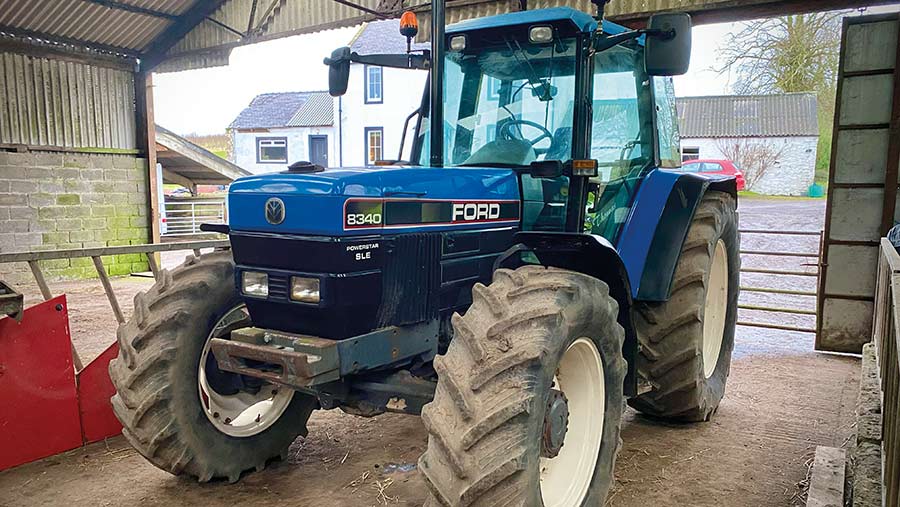
Ford 8340 © MAG/Oliver Mark
I bought a Ford 8340 a few years ago, primarily to join in with the odd tractor run organised by the Dumfries and Galloway Vintage Machinery Club.
It’s a tidy 1996 model on 12,000 hours and it ended up doing a fair bit of work last year, mainly during grass harvesting.
I was hoping to fit a new clutch and get it back to showroom condition over the winter, but I’ve not got around to it yet.
How long do you keep your machines?
There’s no policy here – they just stay until they’re no longer viable to repair, or I see a good opportunity to replace them.
Deciding when to sell can be a difficult call to make, but I don’t stress about it too much – big repair bills are easier to swallow when you’re not constantly getting battered by finance payments.
I tend to buy the tractors at about 6,000 hours – when plenty of contractors are selling them – and run them to about 12,000. That means they take a bit more looking after, but I enjoy the workshop side of the business.
This approach also works with implements. I can refurbish a muckspreader for about £7,000, making it almost as good as a new one that might cost £30,000.
Next on your wish list?
A drill to go on the back of the Claas Xerion. It needs to be a 6m combination, as the ground here is sticky and we tend to plough right in front of the drill.
The current stumbling block is the price – I’ve been looking at options from Lemken, Kuhn and Amazone as I know them well, but they’re all £30,000-plus, which is a bit steep for me at the minute.
Biggest machinery mistake?
Many years ago I was sent to pick up a brand new Ford 7740 (1998).
On the way back, I stupidly set the revs on the hand throttle and cruised along.
The road looked like it was going straight, except it wasn’t… I went into a 90deg corner at full speed and rolled the tractor, which had just 20 hours on the clock.
I was unhurt and I didn’t get quite the telling off I was expecting, but it served as a huge learning experience.
A bad work/life balance is the cause of many accidents, so I now make sure we’re never working ourselves into the ground.
Buying the kit outright and getting rid of the pressure of finance payments means we don’t have to put in crazy hours to make things pay and we no longer work in the dark, or on Sundays, unless we have to.
Most expensive repair bill?
In the forage harvesting days, we were coming home at 1am on a bank holiday Sunday when the Jaguar 890’s four-wheel-drive transfer box seized and was ripped fully out of the machine.
Gordons, the Claas dealership, was brilliant. The engineers managed to limp it back to their yard about four miles away and put it back together.
The bill came to £20,000 in 2006 – so I dread to think what the same problem would cost to sort nowadays.
Most overpriced spare part?
A 6in length of red pipe, bent in an S-shape, that sucks the dirt out of the Xerion’s air filter and sends it up the exhaust. It was £160, which obviously didn’t break the bank, but it did seem unreasonably expensive.
Best invention?
Customers were complaining that the dribble bar was killing grass off in lines across the field and they wanted me to go back to splash-plate application.
It took some working out, but I managed to replace each outlet on the bar with a mini splash plate, which I had laser cut and bent by a local company. The customers love it, and it has solved all the problems.
What couldn’t you live without in the workshop?
The mig welder.
Favourite and least favourite job?
I love combining and spraying. Hate paperwork – and there’s plenty of it with the sewage sludge-spreading contract we have with Scottish Water.
What’s your everyday transport?
A 2016 Mitsubishi L200 Series 5. I actually financed it, completely against my business policy, but it was my little luxury.
It’s now done 120,000 miles and I’d like to replace it with a Hilux or Ranger, but they’re crazy money at the minute.
Best tractor you’ve had?
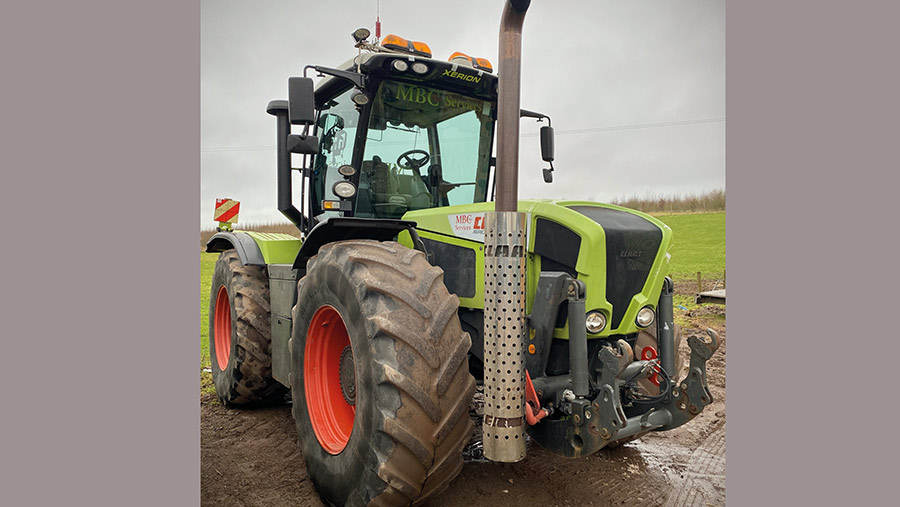
Claas Xerion 3300 © MAG/Oliver Mark
I bought two brand-new 7530s in 2008 that were brilliant. Mine was top spec, with autosteer and all the extras, and I loved it.
More recently, it’s the 2010 Xerion 3300. No one in the area has one, I’d always wanted one and, at £35,000 including delivery from Mark Hellier in Kent, I thought it was a bargain. I doubt I’d lose any money if I decide to sell it.
I still think it’s great, even though I’ve had to buy machinery to justify its existence. If it doesn’t have big, wide kit on the back then the litres/acre fuel use is awful.
Really, I should have something old-school and practical like a 7930, but they’re commanding a lot of money now.
Worst tractor you’ve had?
A very early Claas Ares 816. Gordons was desperate to get them out to contractors and the deal was unbelievable – about £28,000.
The downside was its chronic unreliability. It was basically a green Renault with a one-year warranty and I always told myself I’d never buy another.
But Claas has obviously introduced loads of quality-control changes and lengthened the warranty, and the back up from Gordons is brilliant. My last two Claas tractors have both run to 10,000 hours almost faultlessly.
Biggest machinery bargain?
I’d like to think that most things I buy are a bargain. Although second-hand prices are going up, there are still some good deals to be had if you take your time and keep an eye on the market.
I was pleased with the prices I paid for the Xerion and Lexion, but the fertiliser spreader was probably the best.
It’s a Lely Centerliner – nothing flash, with no weighcells or auto section control – but it cost me £350 at an auction in Carlisle.
I tidied it up and fitted some new discs, so it’s like new now. It’ll throw fertiliser on just as well as something that cost £30,000.
Kit list
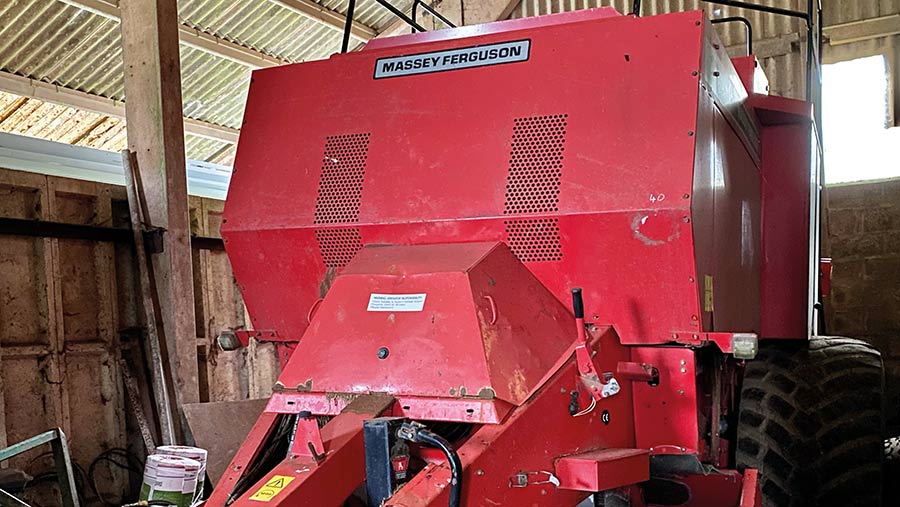
Massey Ferguson 190 baler © MAG/Oliver Mark
- Tractors John Deere 7530 x2, Ford 8340, Claas Xerion 3300
- Combine Claas Lexion 480TT Evolution
- Loaders Claas Scorpion 6030, JCB 414 shovel
- Forage equipment Krone 4m mower, Claas 800 tedder, Kverneland two-rotor rake
- Balers Massey Ferguson 190 big square, John Deere 572 and 592 rounds, New Holland small square
- Cultivation kit Kverneland six-furrow semi-mounted plough, Kverneland CTS stubble cultivator, Vaderstad 620 Cambridge rolls x2
- Sprayer Sands 24m self-propelled
- Fertiliser spreader Lely Centerliner
- Trailers Smyth 12t x2
- Muck and slurry SlurryKat 9m dribble bar and reeler, Cri-Man pump, Bunning rear discharge spreader x3, Agri-Spread AS85 lime spreader x2
- Other Volvo FH13 lorry and straw trailer

